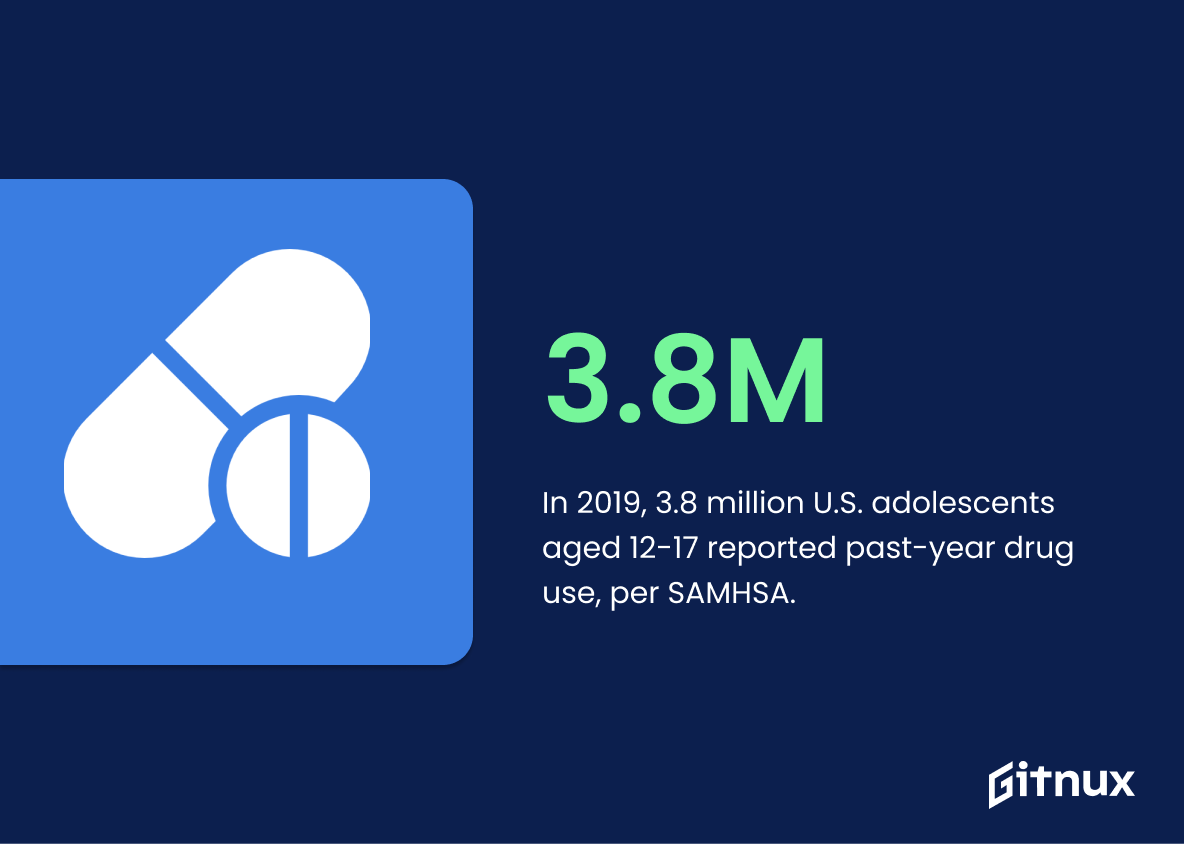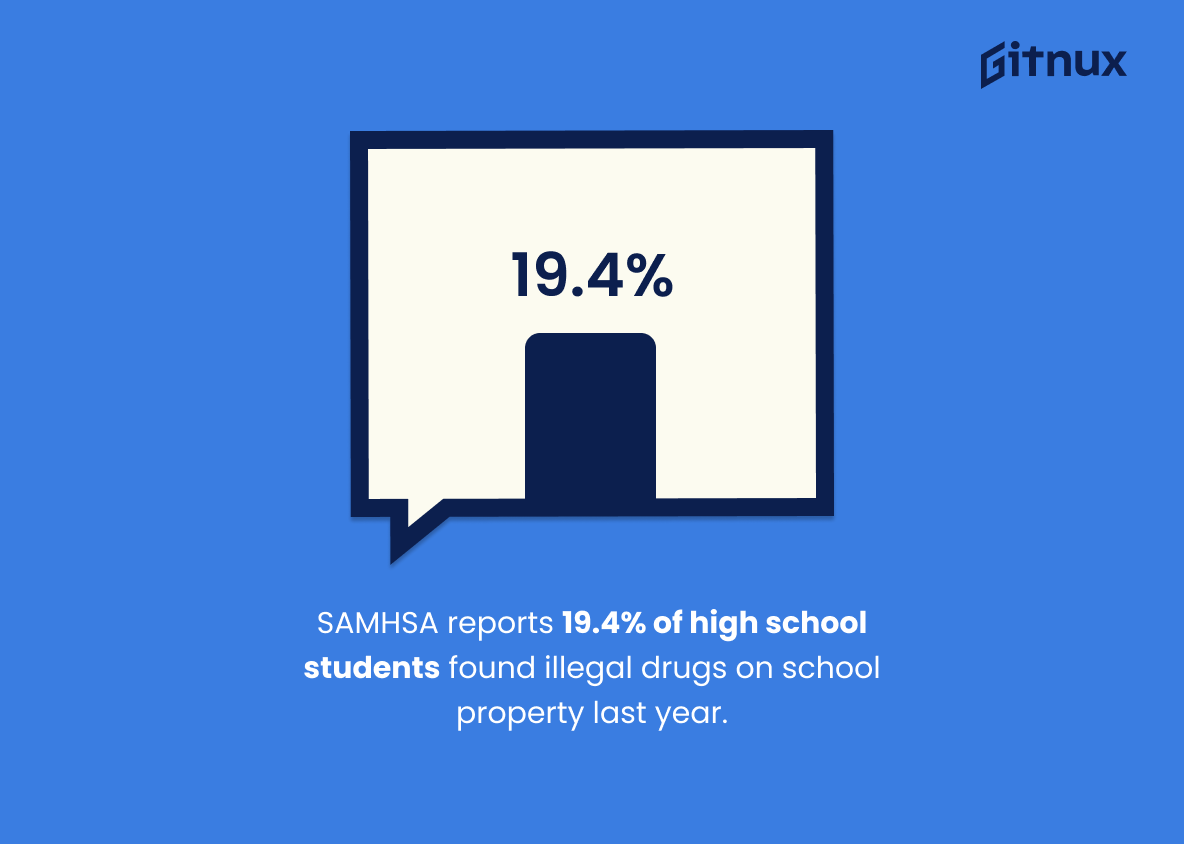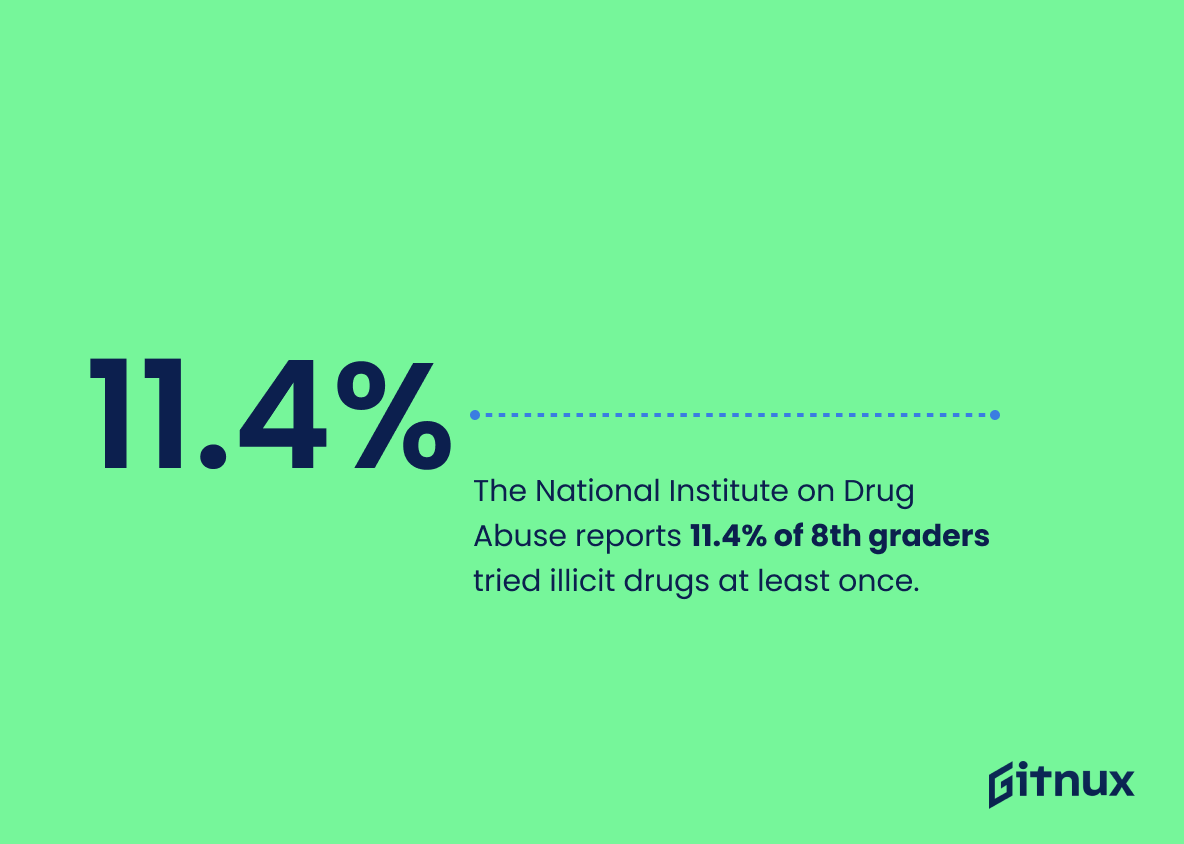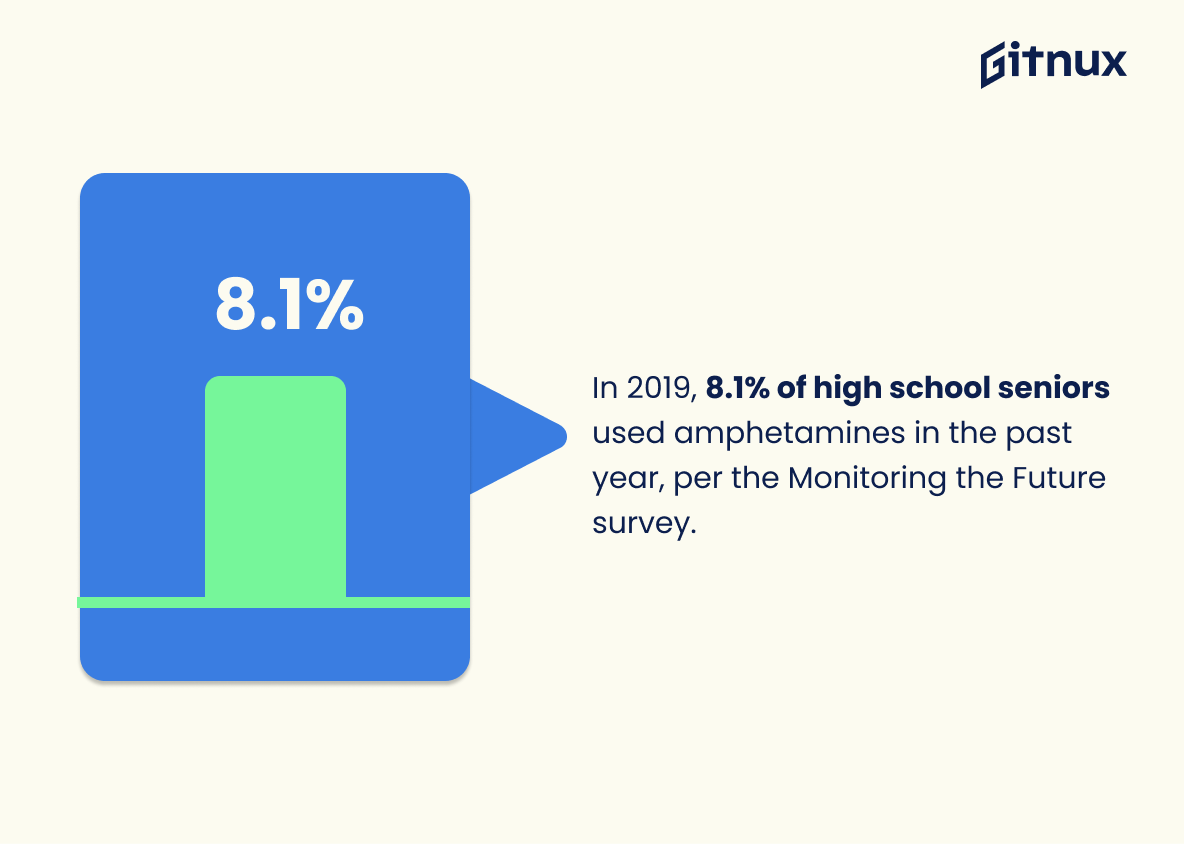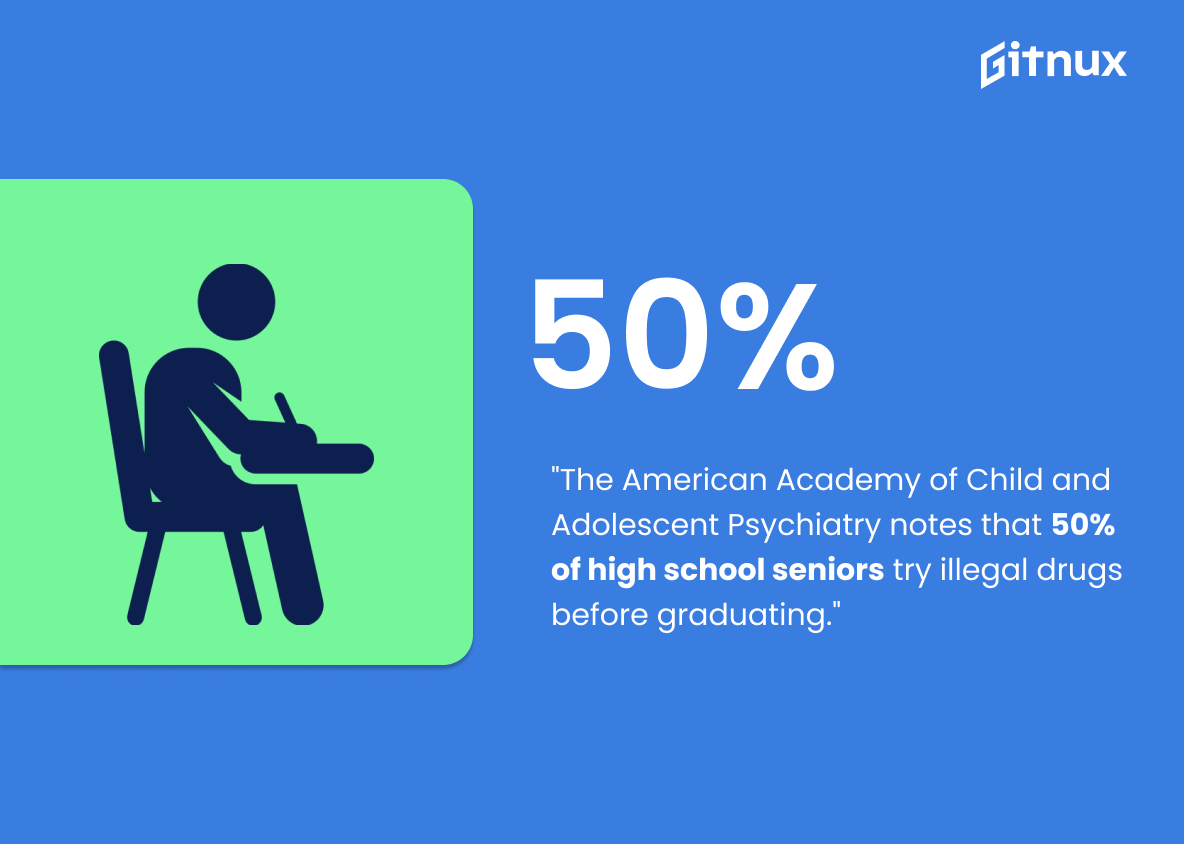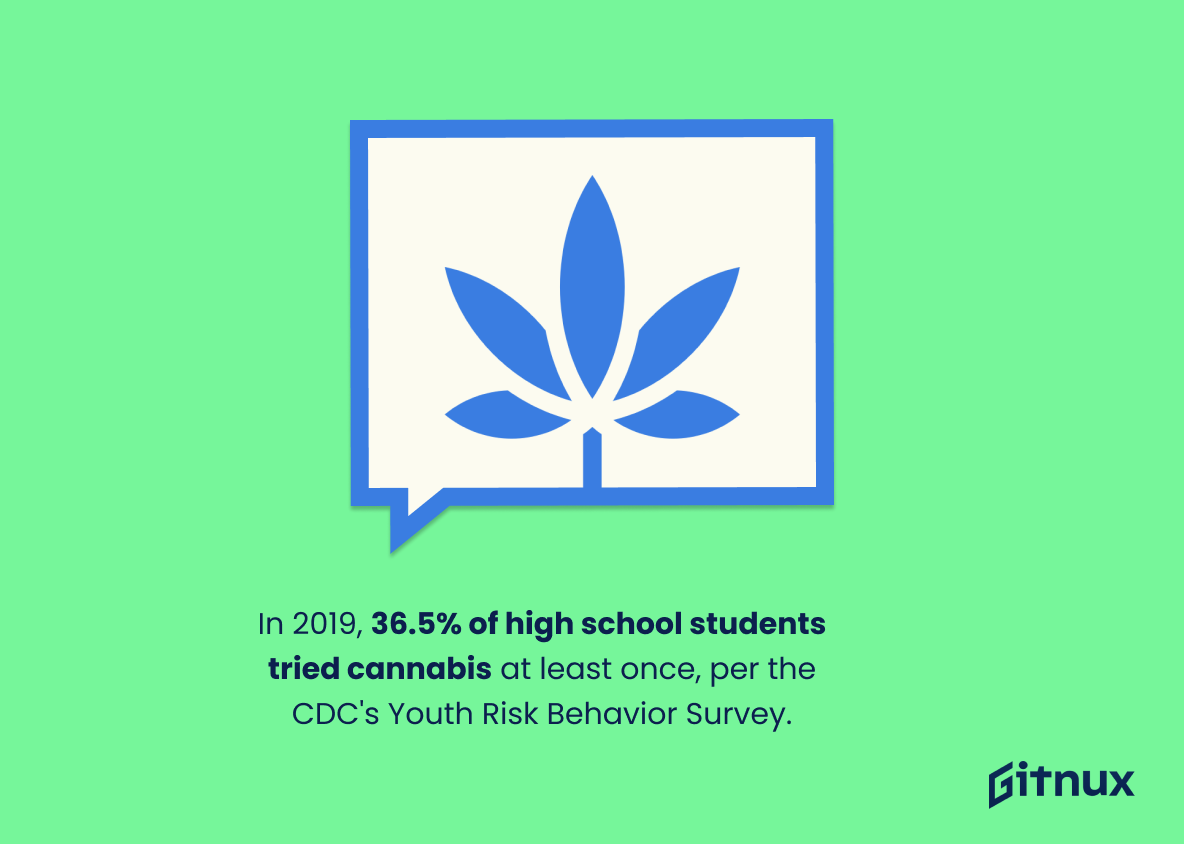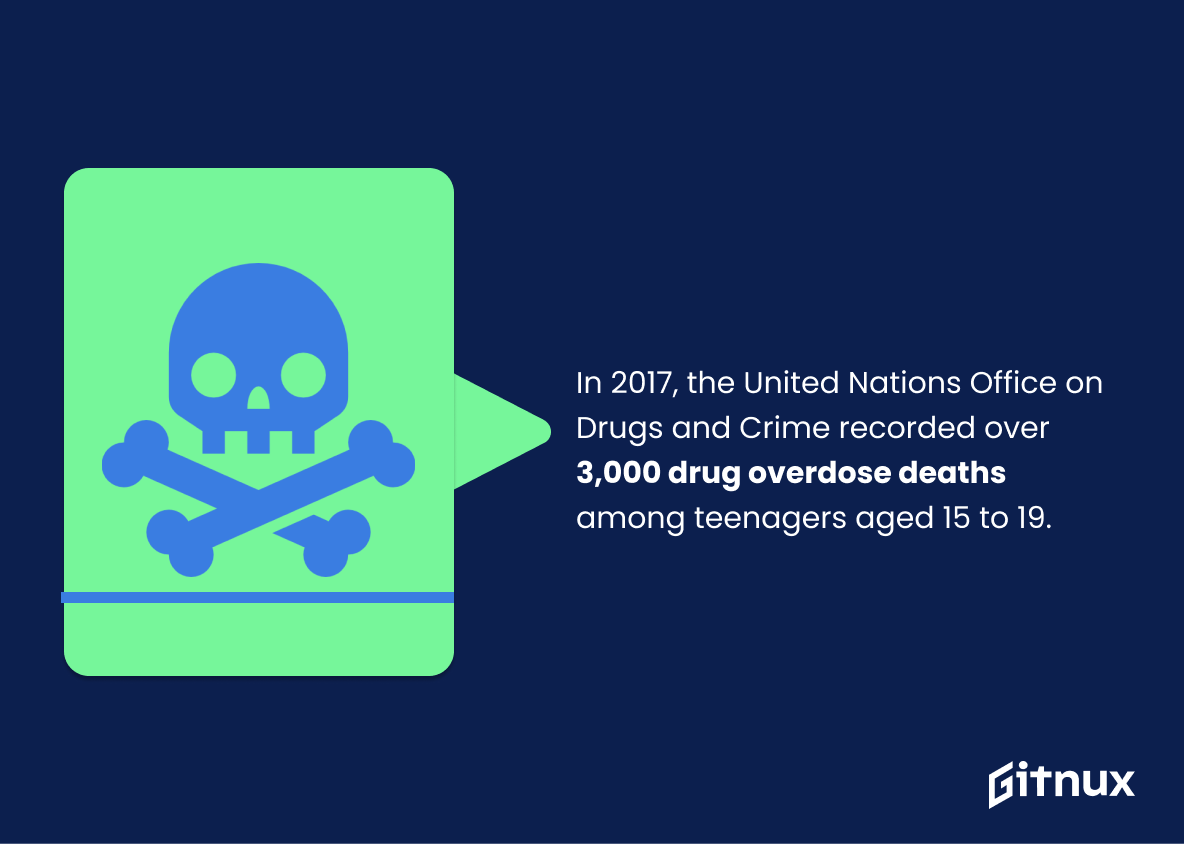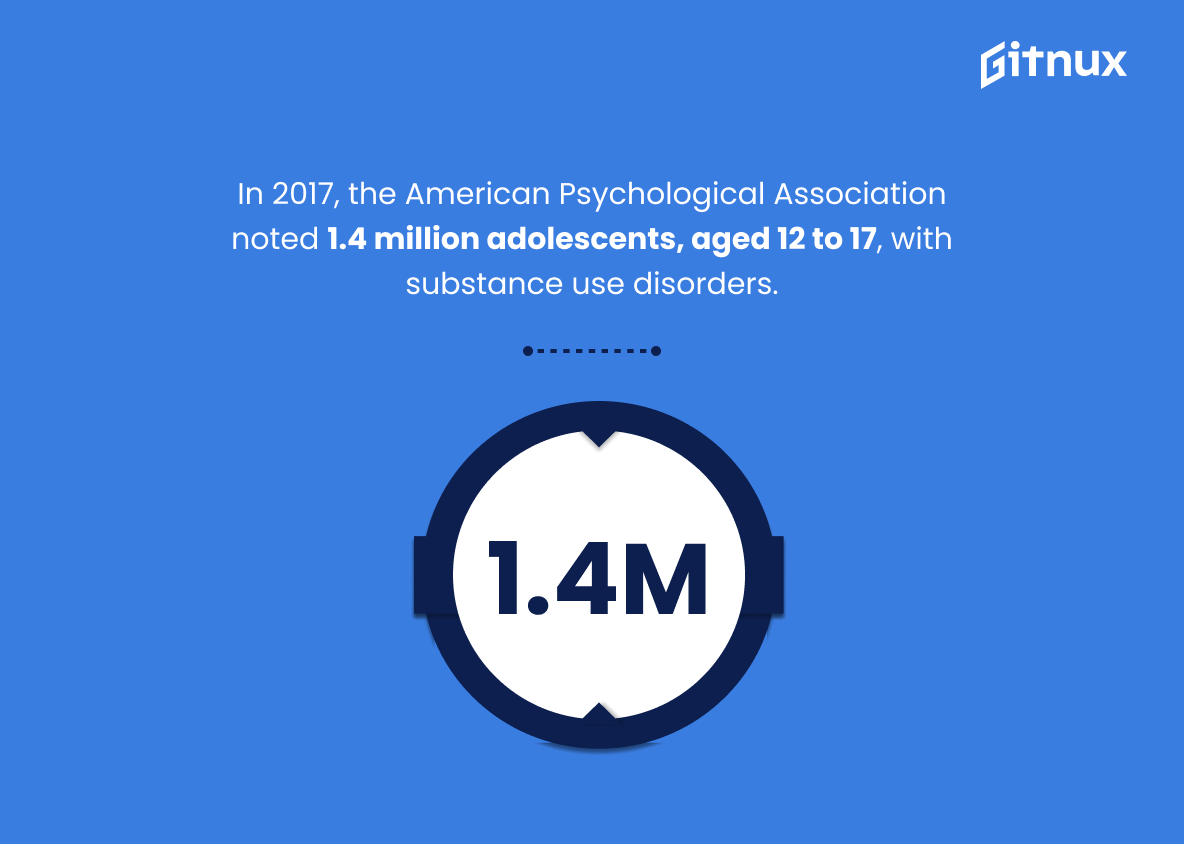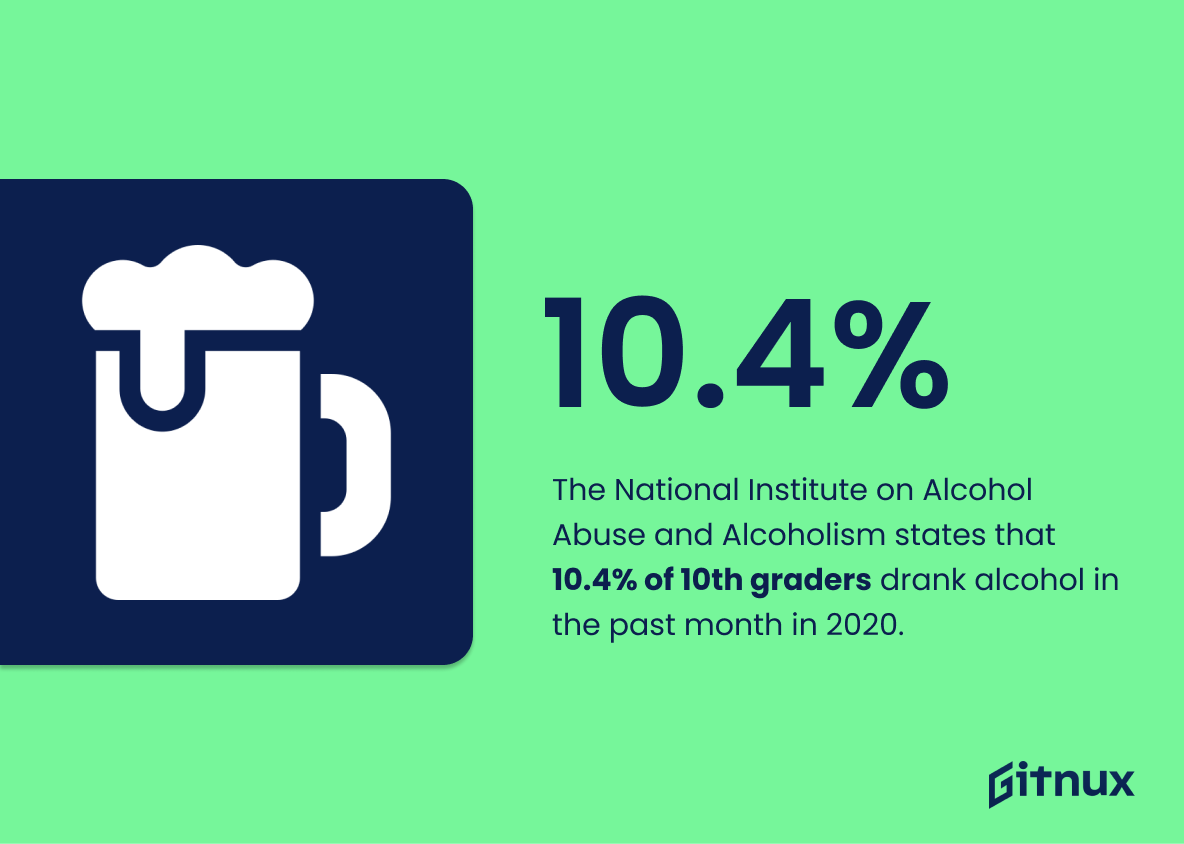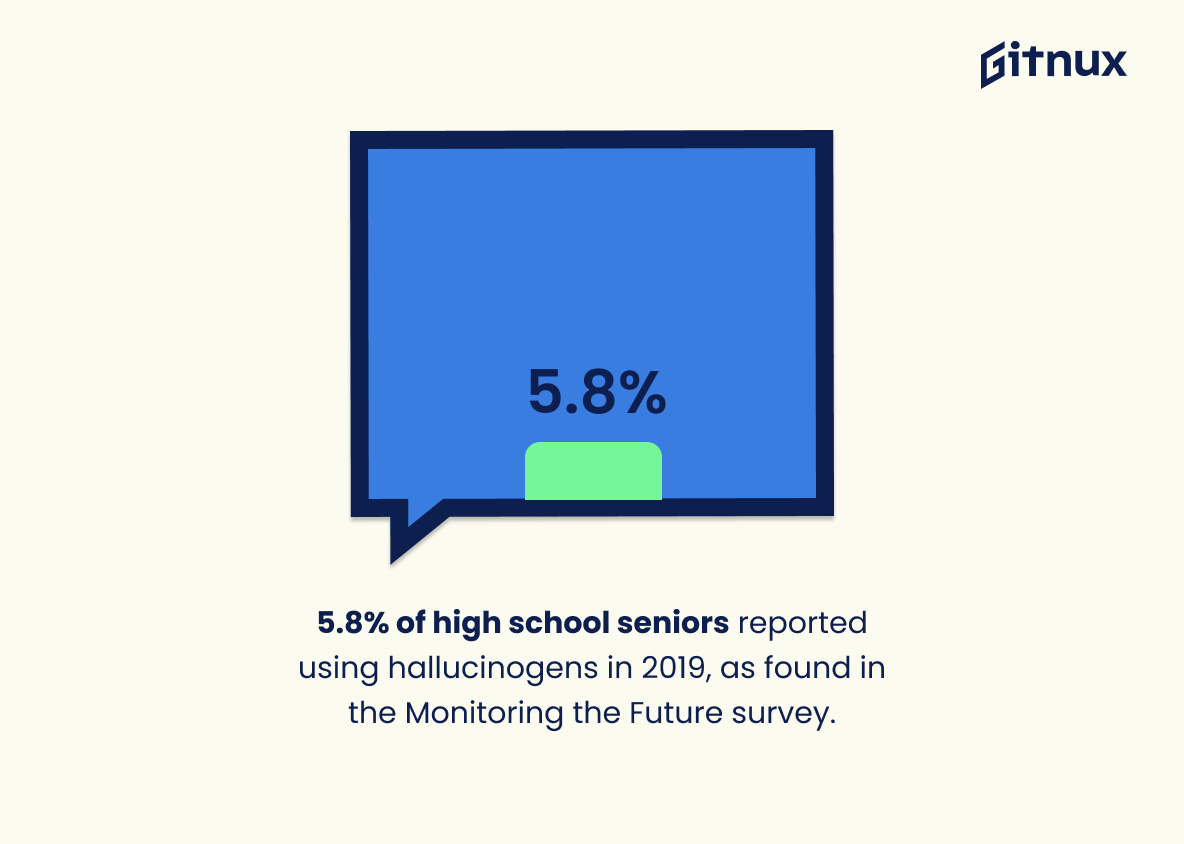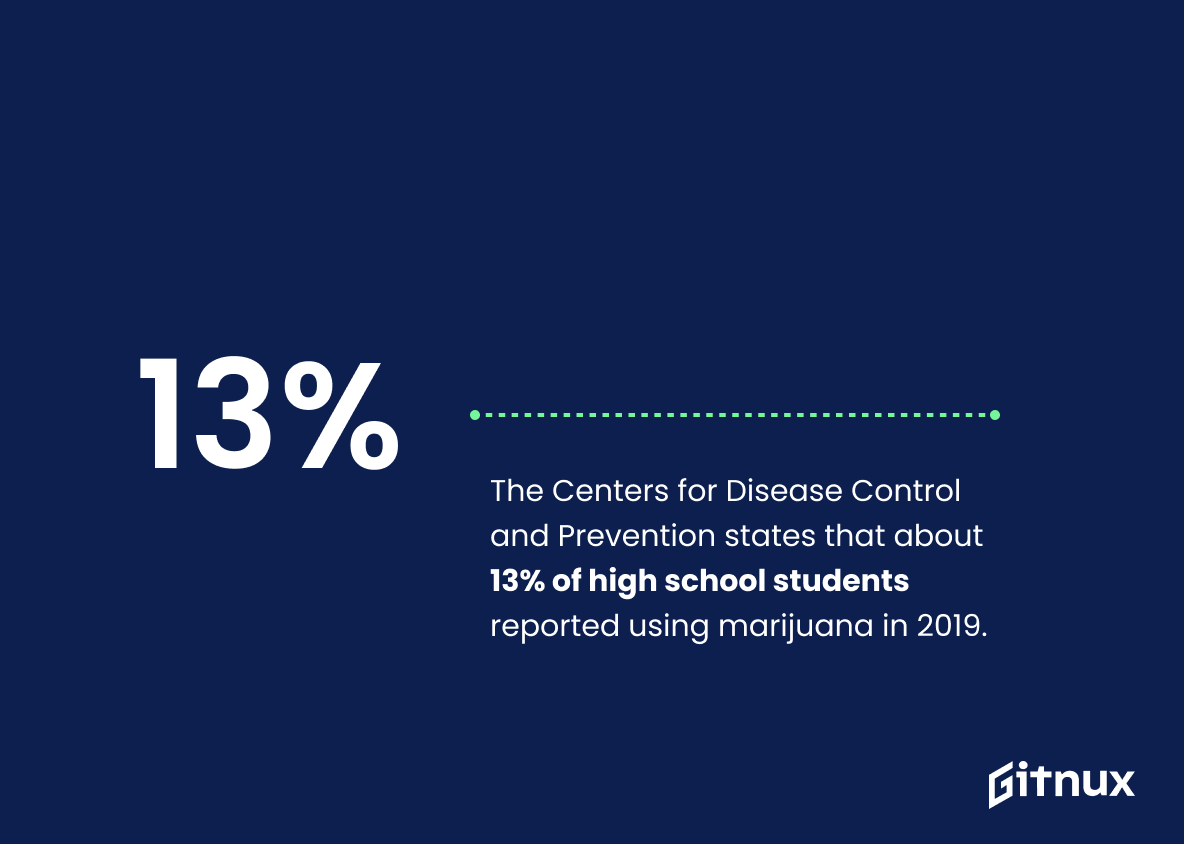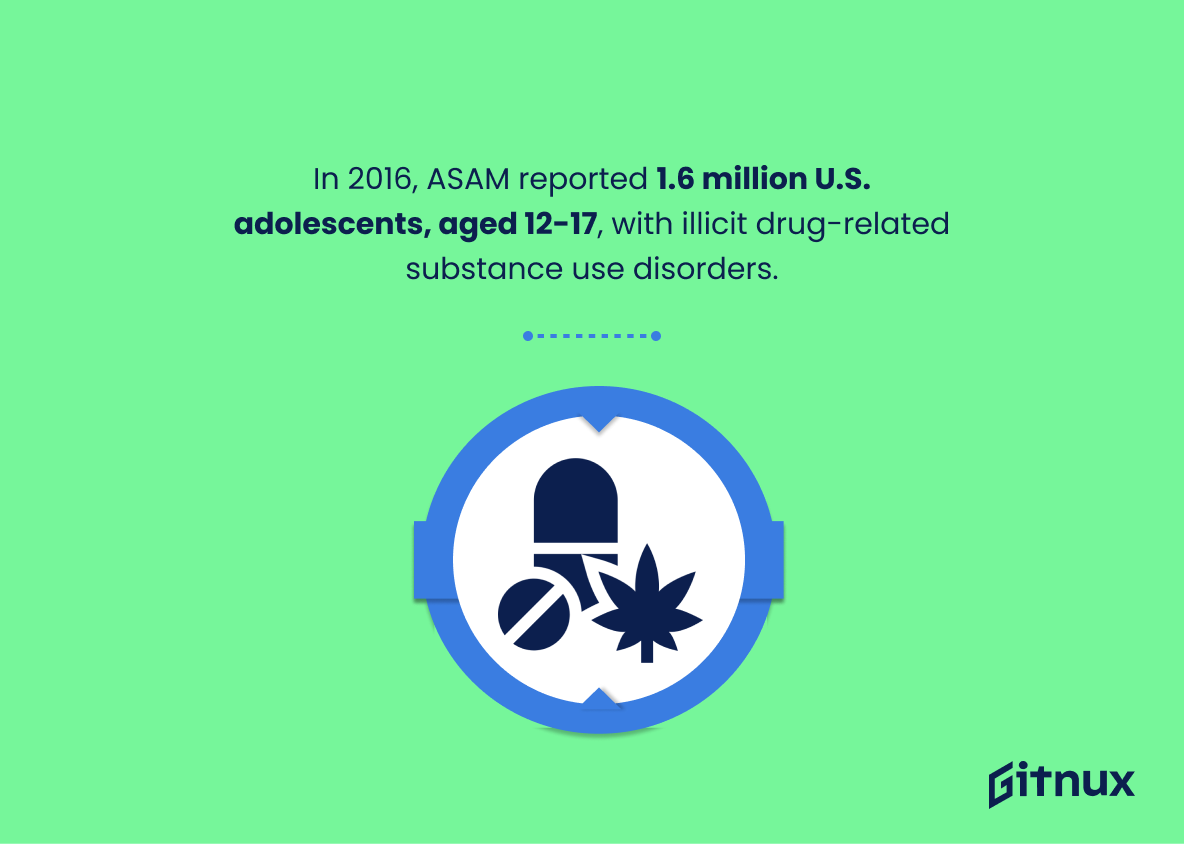Teen drug abuse is a serious issue that affects millions of adolescents in the United States. According to various surveys and reports, approximately 4.4% of high school seniors reported using any illicit drug in the past year, 1.6% of 12-17-year-olds used marijuana in the past month, 3.8 million U.S adolescents aged 12-17 reported using drugs in the past year, 19.4% of high school students sold or were offered illegal drugs on school property within one year’s time frame, 11.4 %of 8th graders had used an illicit drug at least once during their lifetime and 8 .1 %of highschool seniors have misused prescription opioid painkillers by graduation day among other statistics related to teen substance use disorder (SUD). This blog post will discuss these alarming figures as well as provide resources for those seeking help with SUDs
This statistic is a stark reminder of the prevalence of drug abuse among high school seniors. It highlights the need for greater awareness and education about the dangers of illicit drug use, as well as the importance of providing support and resources to those who may be struggling with addiction.
In 2020, about 1.6% of 12-17-year-olds in the United States reported having used marijuana in the past month, per the National Institute on Drug Abuse.
This statistic is a stark reminder of the prevalence of marijuana use among 12-17-year-olds in the United States. It highlights the need for greater awareness and education about the dangers of drug abuse among teens, as well as the need for more effective prevention and intervention strategies.
Teen Drug Abuse Statistics Overview
In 2019, approximately 3.8 million U.S. adolescents aged 12-17 reported using drugs in the past year, as noted in the Substance Abuse and Mental Health Services Administration report (SAMHSA).
This statistic is a stark reminder of the prevalence of drug use among adolescents in the United States. It highlights the need for greater awareness and education about the dangers of drug use among teens, as well as the need for more effective prevention and intervention strategies.
The Substance Abuse and Mental Health Services Administration states that about 19.4% of high school students sold, were offered, or gifted illegal drugs on school property in the past year.
This statistic is a stark reminder of the prevalence of drug abuse among high school students. It highlights the need for greater awareness and prevention efforts to ensure that young people are not exposed to illegal drugs on school property. It also serves as a warning to parents and educators that drug abuse is a real problem that needs to be addressed.
The National Institute on Drug Abuse indicates that 11.4% of 8th graders had used any illicit drug at least once in their lifetime.
This statistic is a stark reminder of the prevalence of drug abuse among 8th graders. It serves as a wake-up call to parents, educators, and other stakeholders to take proactive steps to address the issue of teen drug abuse. It also highlights the need for more comprehensive prevention and intervention strategies to help young people stay away from drugs.
In 2019, 8.1% of high school seniors reported using amphetamines in the past year, according to the Monitoring the Future survey.
This statistic is a stark reminder of the prevalence of amphetamine use among high school seniors, and serves as a powerful illustration of the need to address teen drug abuse. It highlights the urgency of the situation and the importance of taking action to prevent and reduce drug use among teens.
Approximately 12.1% of 10th graders reported using e-cigarettes with nicotine in 2019, as stated in the National Institute on Drug Abuse’s Monitoring the Future survey.
This statistic is a stark reminder of the prevalence of nicotine use among 10th graders. It highlights the need for greater awareness and education about the dangers of e-cigarettes and nicotine use among teens. It also serves as a call to action for parents, educators, and health professionals to take steps to reduce the number of teens using e-cigarettes and nicotine.
The American Academy of Child and Adolescent Psychiatry reports that about 50% of all high school seniors have tried an illegal drug by the time they graduate.
This statistic is a stark reminder of the prevalence of drug abuse among teenagers. It highlights the need for greater awareness and education about the dangers of drug use among high school students. It also serves as a call to action for parents, teachers, and other adults to take steps to prevent drug abuse among teens.
In 2019, about 36.5% of high school students tried using cannabis at least once, as reported in the Centers for Disease Control and Prevention (CDC)’s Youth Risk Behavior Survey.
This statistic is a stark reminder of the prevalence of teen drug abuse in the United States. It highlights the need for greater awareness and education about the dangers of drug use among young people. The fact that nearly four in ten high school students have tried cannabis at least once is a cause for concern and should be addressed with urgency.
The National Center for Biotechnology Information states that nearly 20% of American high school students have tried an illicit drug other than marijuana.
This statistic is a stark reminder of the prevalence of drug abuse among American high school students. It highlights the need for greater awareness and education about the dangers of illicit drug use, as well as the importance of providing support and resources to those affected by drug abuse.
In 2017, over 3,000 teenagers between the ages of 15 and 19 died from drug overdose, as per the United Nations Office on Drugs and Crime.
This statistic is a stark reminder of the devastating effects of drug abuse among teenagers. It highlights the urgent need for greater awareness and prevention of drug abuse among this age group. The fact that so many young lives have been lost to drug overdose is a tragedy that should not be overlooked. It is a call to action for parents, educators, and other stakeholders to take steps to ensure that teenagers are educated about the dangers of drug abuse and provided with the necessary resources to make informed decisions.
The American Psychological Association reveals that about 1.4 million adolescents aged 12 to 17 reported struggling with a substance use disorder in 2017.
This statistic is a stark reminder of the prevalence of substance use disorder among adolescents in the United States. It highlights the need for greater awareness and prevention efforts to help reduce the number of teens struggling with substance abuse.
The National Institute on Alcohol Abuse and Alcoholism states that 10.4% of 10th graders drank alcohol in the past month in 2020.
This statistic is a stark reminder of the prevalence of alcohol consumption among 10th graders in 2020. It highlights the need for greater awareness and education about the dangers of underage drinking and the importance of preventing teen drug abuse.
5.8% of high school seniors reported using hallucinogens in 2019, as found in the Monitoring the Future survey.
This statistic is a stark reminder of the prevalence of hallucinogen use among high school seniors. It serves as a warning that drug abuse is a real issue among teens and that it should not be taken lightly. The Monitoring the Future survey provides a valuable insight into the current state of teen drug abuse, and this statistic is a clear indication that more needs to be done to address the problem.
The Centers for Disease Control and Prevention states that about 13% of high school students reported using marijuana in 2019.
This statistic is a stark reminder of the prevalence of marijuana use among high school students. It serves as a wake-up call to parents, educators, and other stakeholders to take action to address teen drug abuse. The statistic also highlights the need for more education and prevention efforts to help teens make informed decisions about drug use.
The Substance Abuse and Mental Health Services Administration (SAMHSA) indicates a prevalence of 3.3% of substance use disorders among adolescents in 2018.
This statistic is a stark reminder of the prevalence of substance use disorders among adolescents in 2018. It serves as a powerful reminder of the need to address the issue of teen drug abuse and the importance of providing support and resources to those affected. It also highlights the need for further research into the causes and effects of substance use disorders in adolescents, as well as the need for prevention and intervention strategies to reduce the prevalence of these disorders.
Almost 1.6 million U.S. adolescents aged 12 to 17 had a substance use disorder related to illicit drugs in 2016, as reported by the American Society of Addiction Medicine (ASAM).
This statistic is a stark reminder of the prevalence of substance use disorder among adolescents in the United States. It highlights the need for greater awareness and prevention efforts to reduce the number of young people affected by drug abuse. It also serves as a call to action for parents, educators, and other stakeholders to take steps to ensure that our youth are protected from the dangers of drug abuse.
According to the National Institute on Drug Abuse, only about 8.1% of adolescents who needed addiction treatment received it at a specialty facility in 2018.
This statistic is a stark reminder of the reality that many adolescents who need addiction treatment are not receiving it. It highlights the need for greater access to specialized care for teens struggling with substance abuse. It also serves as a call to action for parents, educators, and healthcare providers to be more aware of the signs of drug abuse and to take steps to ensure that teens in need of help are able to get it.
Conclusion
The statistics presented in this blog post demonstrate the prevalence of teen drug abuse and its consequences. From these figures, it is clear that illicit drugs are widely used among adolescents, with marijuana being the most commonly abused substance. Additionally, many teens engage in binge drinking or misuse prescription opioids as well as other substances such as amphetamines and hallucinogens. Unfortunately, only a small percentage of those who need addiction treatment receive it at a specialty facility. These findings highlight the importance of raising awareness about teen drug use and providing resources to help young people struggling with substance abuse issues get access to appropriate care.
References
0. – https://www.cdc.gov
1. – https://www.apa.org
2. – https://www.asam.org
3. – https://www.unodc.org
4. – https://www.ncbi.nlm.nih.gov
5. – https://www.samhsa.gov
6. – https://www.aacap.org
7. – https://www.drugabuse.gov
8. – https://www.pubs.niaaa.nih.gov
